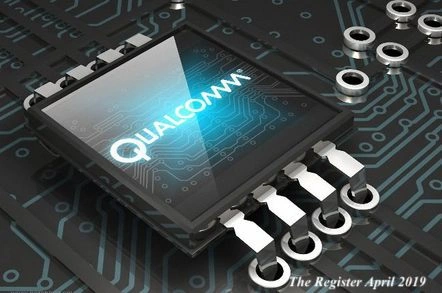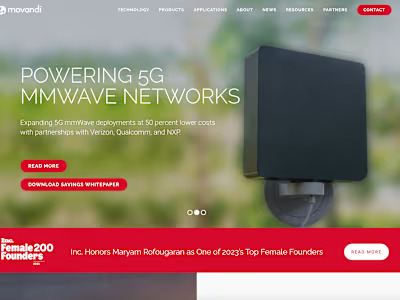How Qualcomm Became a Trade War and National Security Story

By Sam Kessler
The Qualcomm saga of the past couple years can be characterized as being a potential mega merger gone badly, survivors of a hostile takeover bid, and a company that is constantly drenched in legal battles with a great corporate adversary. Blend this with the geopolitical and technological competition between the United States and China, and we have both a trade war and national security story in the making. It also means we have a sub-story that also combines the future of tech dominance and the control of data and tech industry trends. In addition, this is a big story that is still evolving and may take several years of fully assessing the massive impact of these significant events. However, let’s start with the basics of the situation at hand.
Qualcomm’s Relevance in the Tech Industry as a Whole
The last two years has seen non-stop drama for Qualcomm Inc. (QCOM) on several fronts for their management and investors. However, the non-invest-in-tech geek class may not know what Qualcomm is and does, but they are most likely using their products while reading this article online. In fact, Qualcomm has become that quintessential semiconductor and telecommunications company that continues to grow as the chief innovator and architect of the mobile and smartphone technology revolutions, that has pretty much defined how business and lifestyles have been conducted in the 21stcentury. Simply think Internet of Things, also known as IoT, and it’s quite apparent that they’ve played a major role in influencing this trend for the past few decades.
An important part of Qualcomm’s success is their ownership of the cell phone service known as CDMA, which is the technology that supports wireless networks. It actually enables the capability for one’s phone to send and receive data to another wireless device. Without it, there would be no wireless services like Sprint, Verizon, Virgin Mobile, or ATT Wireless carriers to operate it. If this sounds confusing, then think 2G, 3G, 4G, and soon-to-be predominant, 5G wireless services, that will drastically increase the data transfer speeds on all related devices. CDMA is just one of the more than 130,000 patents that Qualcomm owns. However, this monopoly has enabled them to generate 75% of their profits from their 3G and 4G patents alone. In addition, this has given Qualcomm the pricing power to charge up to 5% royalties to cell phone makers like Samsung and Apple for each of their devices sold. They are able to do this, as they are the world’s largest manufacturer of what is known as System on a Chip (SOC), which is the microchip that marries each of the necessary components that powers a cell phone or any other wireless device.

There are other well-known microchips that Qualcomm manufactures, such as the Snapdragon Central Processing Unit series. However, it’s important to note their long-time reputation for research and development as being one of their key strengths in their industry. In addition, their role as an innovation leader in the semiconductor industry are imperative for the reader to be made aware as Qualcomm’s microchips can be seen as being responsible for powering smart phones and Internet of Things (IoT) technology worldwide. This is why the fate of Qualcomm is pretty much of a big deal in the tech industry and in our everyday lives.
The NXP Semiconductors Drama
For the past two years, Qualcomm has been closely tied to some very important events that are interesting to follow, if one incorporates both a big picture perspective and a geopolitical lens when reviewing these details. The first catalyst event occurred when the board of directors of both Qualcomm (QCOM) and NXP Semiconductors announced on October 27, 2016 that Qualcomm would acquire NXP at a share price of $110 per share in cash. This purchase would have been a total value of $47 billion dollars and the addition of NXP (NXPI) would have given Qualcomm greater exposure to the automotive industry. As mentioned above, Qualcomm specializes in microchips for the telecommunications industry, however, companies like Apple were starting to contest their royalty policy for each Apple product (i.e. iPhone, iPad, etc.), claiming that the percentage level was above market norms.
Since royalties make up a majority of Qualcomm’s revenue, it would seem reasonable to expand into other areas of industry. NXP Semiconductors, a Dutch company, specializes in creating semiconductors or microchips that are typically used in automobile systems such as infotainment, networking, and safety systems. In other words, NXP specializes in making it possible for Internet of Things (IoT) applications and operating systems to be functional in modern automobiles. An acquisition of NXP would have been a major deal for Qualcomm, investors, and the tech industry in general.
However, the acquisition became a very lengthy process as one thing after another kept prolonging it with updated due dates. In particular, it became difficult when activist investor and large shareholder of NXP Semiconductors, Elliot Management Corp, kept campaigning for a much higher sale price. Rather than $110 per share, Elliot felt that NXP was worth up to $135 per share and that Qualcomm was low-balling the company and their investors. A series of price negotiations occurred while Qualcomm was getting the acquisition of NXP approved by multi-country anti-trust regulators throughout the world. Eventually, they did reach tentative agreements with Elliot Management to purchase shares at slightly higher prices, however it would end up being short-lived due to complications that will be discussed later in this article.
The Apple Ordeal
While the NXP affair was evolving, Apple Inc. (AAPL) began a lawsuit against Qualcomm in January 2017 over their royalties policy and began withholding billions of dollars owed to Qualcomm until it was legally settled in court. When this occurred, the price of the Qualcomm stock nosedived in the stock market. This temporarily unsettled investors’ confidence in the company’s future while the NXP merger was still held up. Apple’s attempts to disrupt Qualcomm’s 4G chip dominance via withholding royalties and working on their own chip variations with Intel were in full motion at this point in time. However, it would take another two plus years for the Apple lawsuit to end in Qualcomm’s favor in April 2019 with at least $4.5 billion owed to them. But before this lawsuit ended, Qualcomm was faced with yet another major challenge that would greatly impact both their future and that of the tech industry as a whole.
The Broadcom War for Qualcomm Succession
A dramatic hostile takeover attempt by Hock Tan’s, Broadcom LTD (AVGO), was initiated with an unsolicited bid to buy Qualcomm for $130 billion on November 6, 2017, which could have made it the largest acquisition in the technology industry ever. This occurred during the early stages of the trade war between the United States and China as the U.S. Committee on Foreign Investment in the United States (CFIUS) had begun working on a series of new cases that canceled major mergers and acquisitions attempts by foreign firms, especially ones that were affiliated with China in some shape or form (i.e. Alibaba/Money Gram merger). For the next four months, this seemed like the usual standard run-of-the-mill hostile takeover experience by both parties. After all, there was the usual cutthroat corporate legal battle tactics incorporated by both companies, as well as mixed loyalties and confidence by Qualcomm’s board of directors and shareholders. For various reasons some people on the Qualcomm side wanted the company to cave in while others chose to hold fast and let the situation play itself out.
However, the takeover attempt ended when the Trump administration via CFIUS issued an executive order that officially ended Broadcom’s bid to buyout Qualcomm on March 12, 2018. The reason why the U.S. government intervened was based on a few things. First, it was the relationship with Chinese entities and the second reason was mainly centered on their plans of potentially dismantling the current role of Qualcomm in the tech/semiconductor industry as a whole. Broadcom has a track record of having bought valuable companies and breaking them up for profit, without growing and developing them for long term purposes. Qualcomm is renown for investing in long term growth and innovation, which the Broadcom merger could have easily ended, while making it possible for companies like Huawei and other Chinese telecom firms to reduce Qualcomm’s impact on the 5G development and innovation revolution that is currently transpiring. In a sense, Qualcomm is considered as being an American crown jewel or an instrument to reaching global 5G dominance for at least the next quarter of the 21stcentury.
NXP Drama Ends with a Geopolitical Corporate Stalemate
Now, let’s go back to the NXP affair that was still occurring at this time period. Qualcomm had finally received approval from multiple country anti-trust regulators. The European Union (EU) review was a tough sell for them but was eventually approved. The only country left for approval was China’s Ministry of Commerce. They were holding out as a result of the rising trade tensions between the U.S. and Chinese governments. However, the decision to allow U.S. chipmakers to do business with China’s ZTE Corp that originally was going to be blocked by the U.S. government, was considered the compromise that would clear the way for the NXP deal. Instead, the Chinese Ministry of Commerce decided to let the deadline pass and it forced Qualcomm to back out of the deal that was two years in the making.
Apple Pays Up, Qualcomm Rebalances, and Huawei Loses U.S. Access
In the short term, there was a segment of Qualcomm shareholders who vocally expressed their utter dismay and unhappiness with how the Broadcom and NXP ordeals played out. However, their viewpoint also depended on the type of shareholder they were as well as their trading and investing philosophies, strategies, goals, and objectives. With that in mind, the Apple royalty lawsuit was pretty much the biggest problem they had left until it was recently dismissed in court where they must pay Qualcomm the $4.5 billion that had previously been withheld. This became the end of the last big batch of obstacles that were preventing higher investor confidence as the stock itself had soared back up to above its original fair value market price in the $80s. Previously, their average trading price ranged from the late $40s and early-mid $50s range during the past two years. So, this was a major catalyst event for the Qualcomm stock as a whole.

The Great Power Competition Conundrum Continues…
In addition, the other catalyst event was the recent U.S. government decision to block China telecom giant, Huawei, which is heavily competing with Qualcomm and other U.S. firms for global 5G dominance. They are also considered as being a national security concern in regard to the securitization of data, infrastructure, and intellectual property. In this current geopolitical climate, the top decisions of allowing or disallowing major mergers and acquisitions from happening are now a part of political, defense, and global security positioning strategies of nations and their allies. This is a growing reality that is quickly being understood by those who are adapting to the new international system that is evolving in real-time. As a result, we’ll most likely continue experiencing global supply chains being affected by the rise of great power competition in a growing multipolar system. It will also increase the need for securing data, infrastructure, and intellectual property as more countries continue to scale up their competitive levels, expertise, and sophistication. The Qualcomm scenarios that were mentioned above are prime examples of this and why they have become a national security and trade war story.
_______________________________________________________
Sam Kessler is a writer, analyst, and consultant with a global security, geopolitics, and business/finance background. He is also a Geopolitical Advisor for North Star Support Group. Sam has an M.A. in National Security and Intelligence Analysis from American Military University (AMU), which is part of the American Public University System (APUS). He can be contacted via his website/blog at www.samkessler.com.
________________________
Subscribe To My Blog!
Like this project
Posted Aug 22, 2024
This article discusses how Qualcomm's drama with NXPI Semiconductors, Apple Inc, and Broadcom LTD correlate with the U.S. and China trade war.
Likes
0
Views
38





